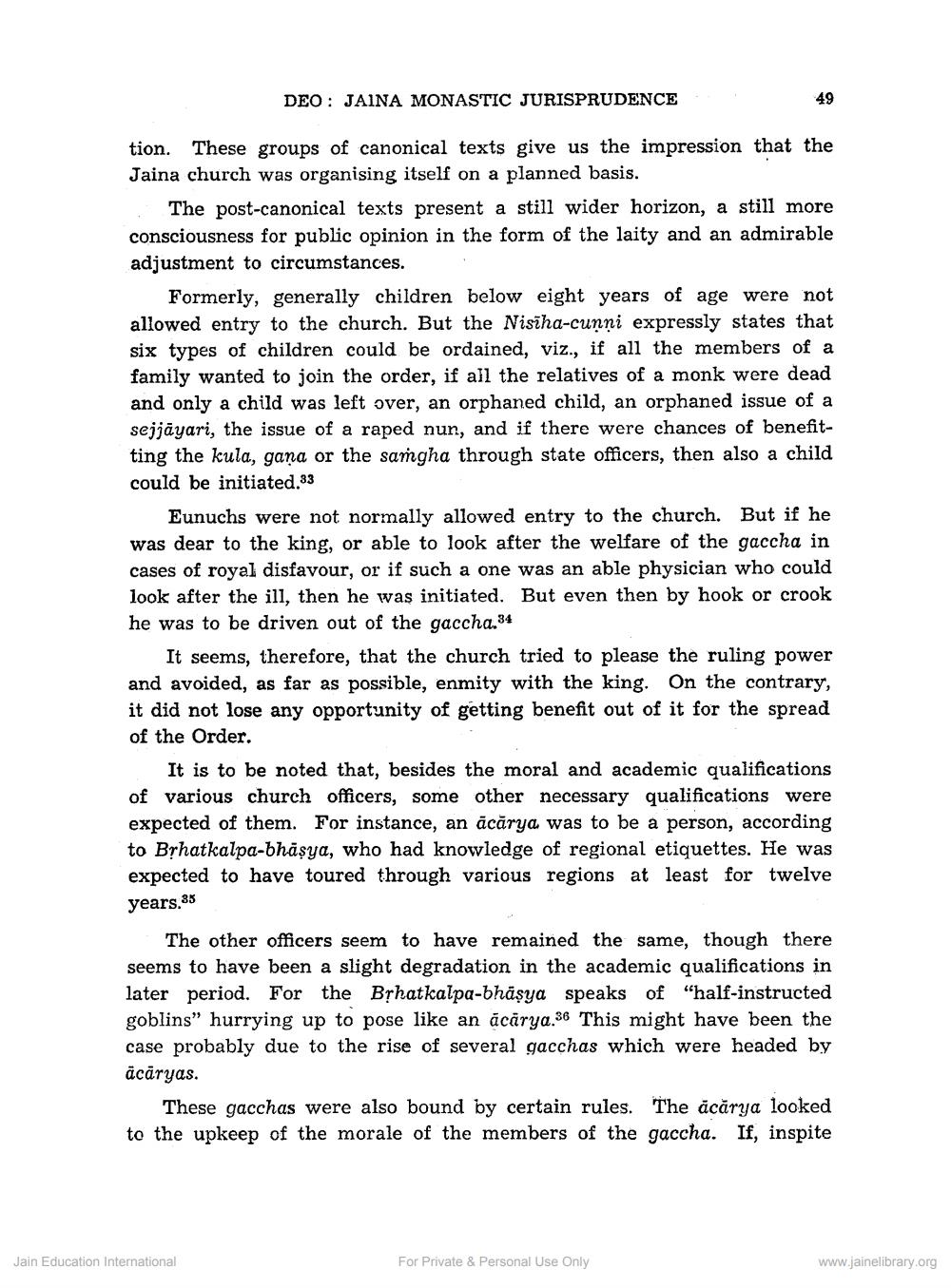Book Title: Some Aspects of Jaina Monastic Jurisprudence Author(s): S B Deo Publisher: Z_Vijay_Vallabh_suri_Smarak_Granth_012060.pdf View full book textPage 9
________________ DEO: JAINA MONASTIC JURISPRUDENCES tion. These groups of canonical texts give us the impression that the Jaina church was organising itself on a planned basis. The post-canonical texts present a still wider horizon, a still more consciousness for public opinion in the form of the laity and an admirable adjustment to circumstances. Formerly, generally children below eight years of age were not allowed entry to the church. But the Nischa-cunni expressly states that six types of children could be ordained, viz., if all the members of a family wanted to join the order, if all the relatives of a monk were dead and only a child was left over, an orphaned child, an orphaned issue of a sejjāyari, the issue of a raped nun, and if there were chances of benefitting the kula, gana or the samgha through state officers, then also a child could be initiated.33 Eunuchs were not normally allowed entry to the church. But if he was dear to the king, or able to look after the welfare of the gaccha in cases of royal disfavour, or if such a one was an able physician who could look after the ill, then he was initiated. But even then by hook or crook he was to be driven out of the gaccha.34 It seems, therefore, that the church tried to please the ruling power and avoided, as far as possible, enmity with the king. On the contrary, it did not lose any opportunity of getting benefit out of it for the spread of the Order. It is to be noted that, besides the moral and academic qualifications of various church officers, some other necessary qualifications were expected of them. For instance, an ācārya was to be a person, according to Brhatkalpa-bhāsya, who had knowledge of regional etiquettes. He was expected to have toured through various regions at least for twelve years.35 The other officers seem to have remained the same, though there seems to have been a slight degradation in the academic qualifications in later period. For the Brhatkalpa-bhäsya speaks of "half-instructed goblins” hurrying up to pose like an acārya.36 This might have been the case probably due to the rise of several gacchas which were headed by ācāryas. These gacchas were also bound by certain rules. The acārya looked to the upkeep of the morale of the members of the gaccha. If, inspite Jain Education International For Private & Personal Use Only www.jainelibrary.orgPage Navigation
1 ... 7 8 9 10 11 12 13 14
